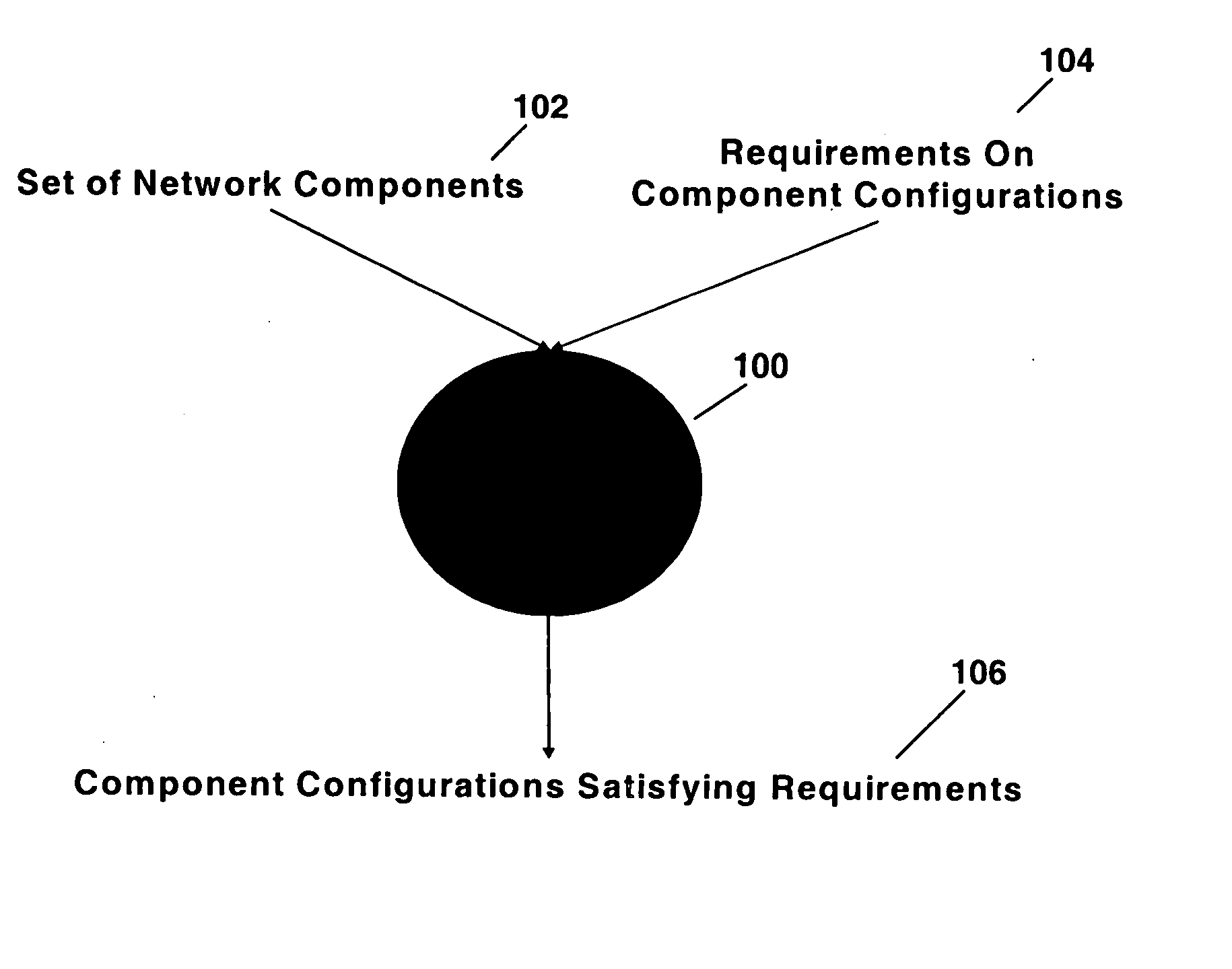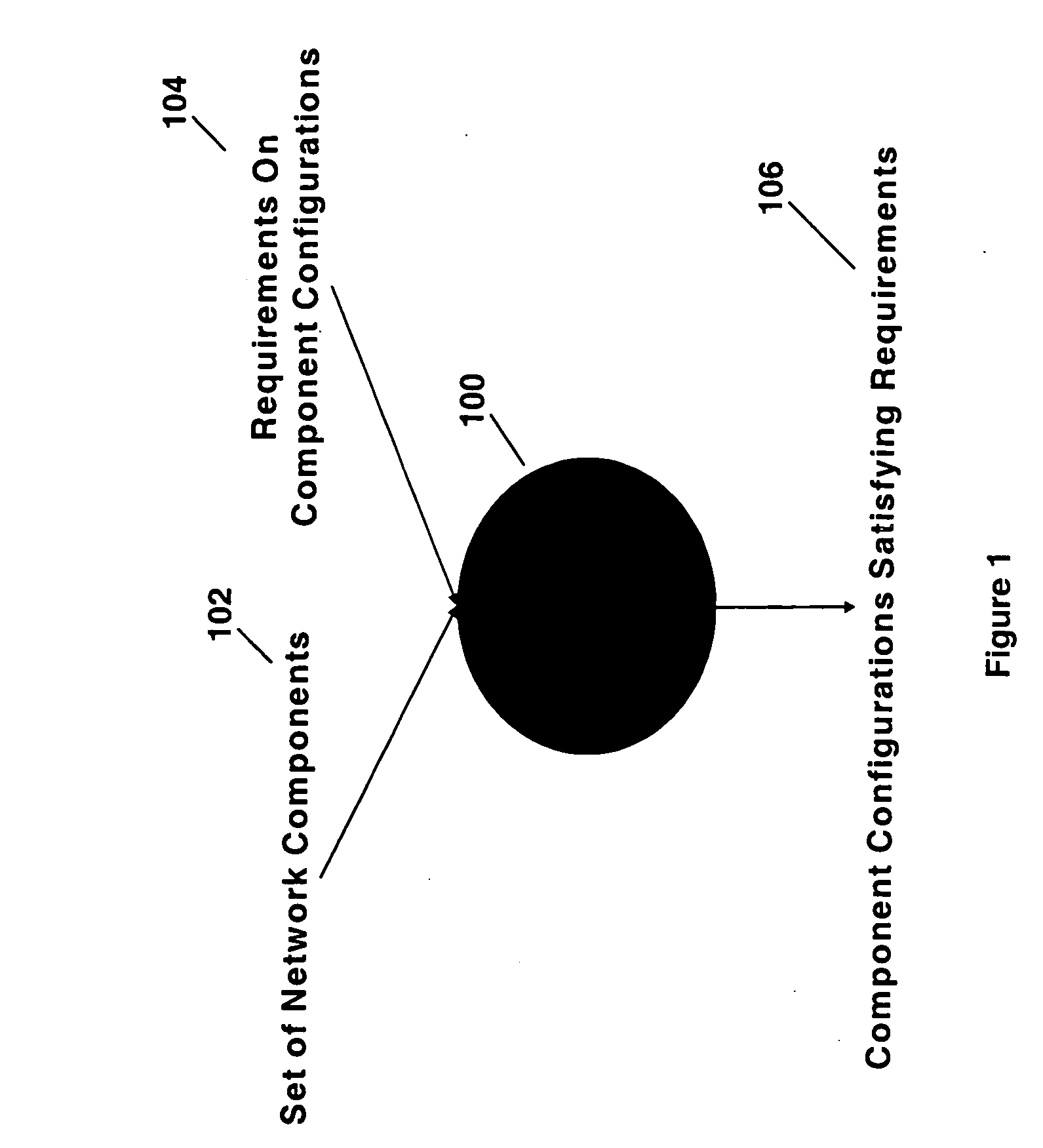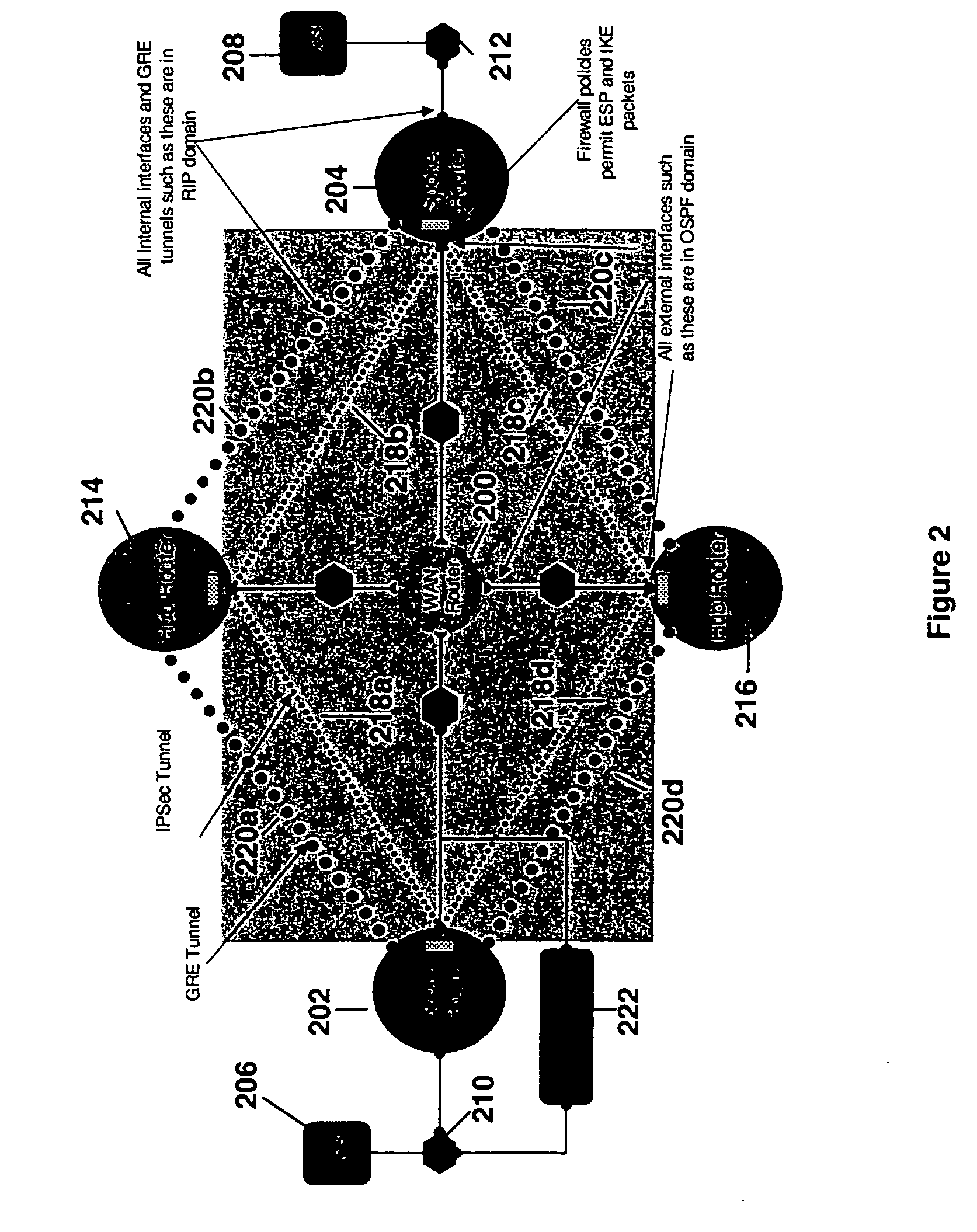Network configuration management by model finding
a network configuration and model finding technology, applied in the field of network management configuration, can solve the problems of unsatisfactory first-order logic, rule changes or extension, and inability to specify full first-order logic, so as to avoid unintended answers and minimize quantifiers
- Summary
- Abstract
- Description
- Claims
- Application Information
AI Technical Summary
Benefits of technology
Problems solved by technology
Method used
Image
Examples
Embodiment Construction
[0026] Alloy is used to realize the concept of a Requirement Solver as shown in FIG. 1. The Requirement Solver 100 has two input items: a set of network components 102 and requirements of component configurations 104, and produces as its output, component configurations satisfying the requirements 106.
[0027] The Requirement Solver has a direct implementation in Alloy. Network component types, attributes and values are directly modeled in Alloy. A set of network components of different types is modeled as a scope. Network system configuration is modeled as values of all component attributes in a given scope. Network requirements are modeled using first-order logic. Solutions are found by the Alloy interpreter.
[0028] The Requirement Solver can be used to accomplish a variety of reasoning tasks: [0029] 1. Configuration Synthesis: to determine how to configure a set of components so that they satisfy a system requirement R, submit the set of components and system requirement to the Re...
PUM
 Login to View More
Login to View More Abstract
Description
Claims
Application Information
 Login to View More
Login to View More - R&D
- Intellectual Property
- Life Sciences
- Materials
- Tech Scout
- Unparalleled Data Quality
- Higher Quality Content
- 60% Fewer Hallucinations
Browse by: Latest US Patents, China's latest patents, Technical Efficacy Thesaurus, Application Domain, Technology Topic, Popular Technical Reports.
© 2025 PatSnap. All rights reserved.Legal|Privacy policy|Modern Slavery Act Transparency Statement|Sitemap|About US| Contact US: help@patsnap.com



